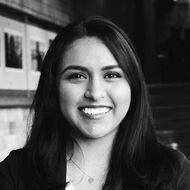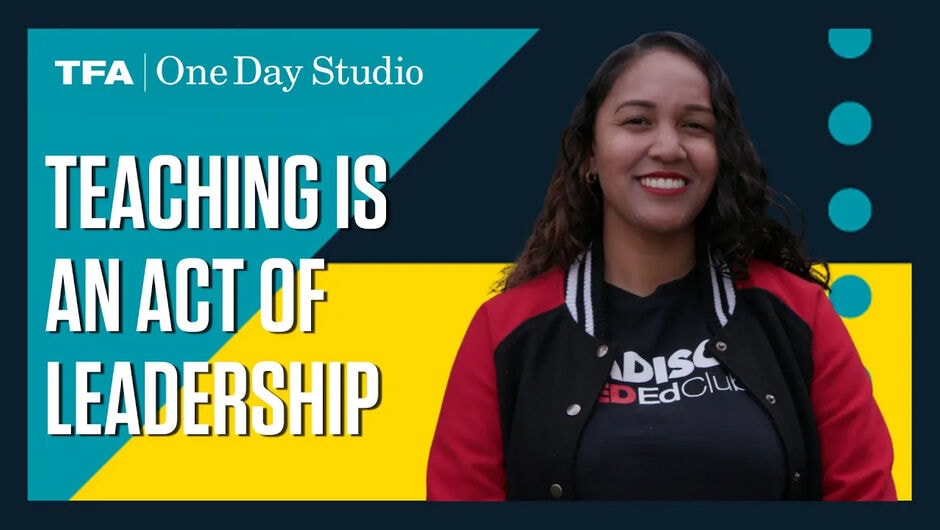What’s It Like to Be a Middle School AAPI Activist?
A middle school student is paving the way for future generations of youth activists by proving that even the youngest people can make a significant impact in their community.
What’s It Like to Be a Middle School AAPI Activist?
A middle school student is paving the way for future generations of youth activists by proving that even the youngest people can make a significant impact in their community.
May 18, 2022

Video Producer

Writer-Editor, One Day
View transcript
My name is Mina. I'm 14 years old. I'm in eighth grade.
I'm the daughter of immigrants. I am a student. I am a youth.
I founded AAPI Youth Rising and my personal mission for my group is to bring a platform for youth to share their voices and make change and build a more positive world for everyone.
Well back in spring of 2020, my family member had just been coughed at walking down the street. And that was very, I guess, sort of a very harmful and shocking to my family.
I really realized that no one's safe from that kind of thing. And then that happened, and it just made me even more sort of like, I need to do something.
On March 28, 2021, we had our AAPI Youth Rising rally. We sort of realized that youth could have a really big impact on the world and that our voices deserve to be heard and that our stories deserve to be told.
I am saddened by our elders being attacked. I’m saddened about what’s happened in Atlanta. I am saddened by all of the communities of color that are affected by racism. Is this what it means to be Asian-American youth right now? But we as youth have a chance to build our future, to raise our voices, and to demand change.
We have around 20ish members. We have a few high school students. But most of them are middle school, eighth grade. A lot of them are friends.
Our mission is to take action in our community to make a positive difference. And we advocate for issues facing AAPI youth and try to create a platform for AAPI to be able to share their voices and speak out.
One of our big missions is to try to make education more diverse and more inclusive for everyone.
I felt like I had been failed by [the] education I had gotten and I hadn't learned about, like, almost no people who looked like me.
That means that other youth aren't learning about their own histories growing up. And that's that's really bad because they can feel excluded for things. And that's just not a good way to start out your education.
It's very important to learn your own history and learn others history because that was the first step to sort of working against racism is you have to learn about histories of racism and histories of celebrating other communities as well.
My first piece of advice would be to educate yourself a bit more. Learn about a lot of legislative action that's happening. Learn about the government a bit more because that's definitely has huge impacts on your life.
Don't feel like any action isn't significant. If you want to take like a really small action and just do something like speaking out at your school.
Don’t feel like anything will be too big for you to achieve.
I'm the daughter of immigrants. I am a student. I am a youth.
I founded AAPI Youth Rising and my personal mission for my group is to bring a platform for youth to share their voices and make change and build a more positive world for everyone.
Well back in spring of 2020, my family member had just been coughed at walking down the street. And that was very, I guess, sort of a very harmful and shocking to my family.
I really realized that no one's safe from that kind of thing. And then that happened, and it just made me even more sort of like, I need to do something.
On March 28, 2021, we had our AAPI Youth Rising rally. We sort of realized that youth could have a really big impact on the world and that our voices deserve to be heard and that our stories deserve to be told.
I am saddened by our elders being attacked. I’m saddened about what’s happened in Atlanta. I am saddened by all of the communities of color that are affected by racism. Is this what it means to be Asian-American youth right now? But we as youth have a chance to build our future, to raise our voices, and to demand change.
We have around 20ish members. We have a few high school students. But most of them are middle school, eighth grade. A lot of them are friends.
Our mission is to take action in our community to make a positive difference. And we advocate for issues facing AAPI youth and try to create a platform for AAPI to be able to share their voices and speak out.
One of our big missions is to try to make education more diverse and more inclusive for everyone.
I felt like I had been failed by [the] education I had gotten and I hadn't learned about, like, almost no people who looked like me.
That means that other youth aren't learning about their own histories growing up. And that's that's really bad because they can feel excluded for things. And that's just not a good way to start out your education.
It's very important to learn your own history and learn others history because that was the first step to sort of working against racism is you have to learn about histories of racism and histories of celebrating other communities as well.
My first piece of advice would be to educate yourself a bit more. Learn about a lot of legislative action that's happening. Learn about the government a bit more because that's definitely has huge impacts on your life.
Don't feel like any action isn't significant. If you want to take like a really small action and just do something like speaking out at your school.
Don’t feel like anything will be too big for you to achieve.





